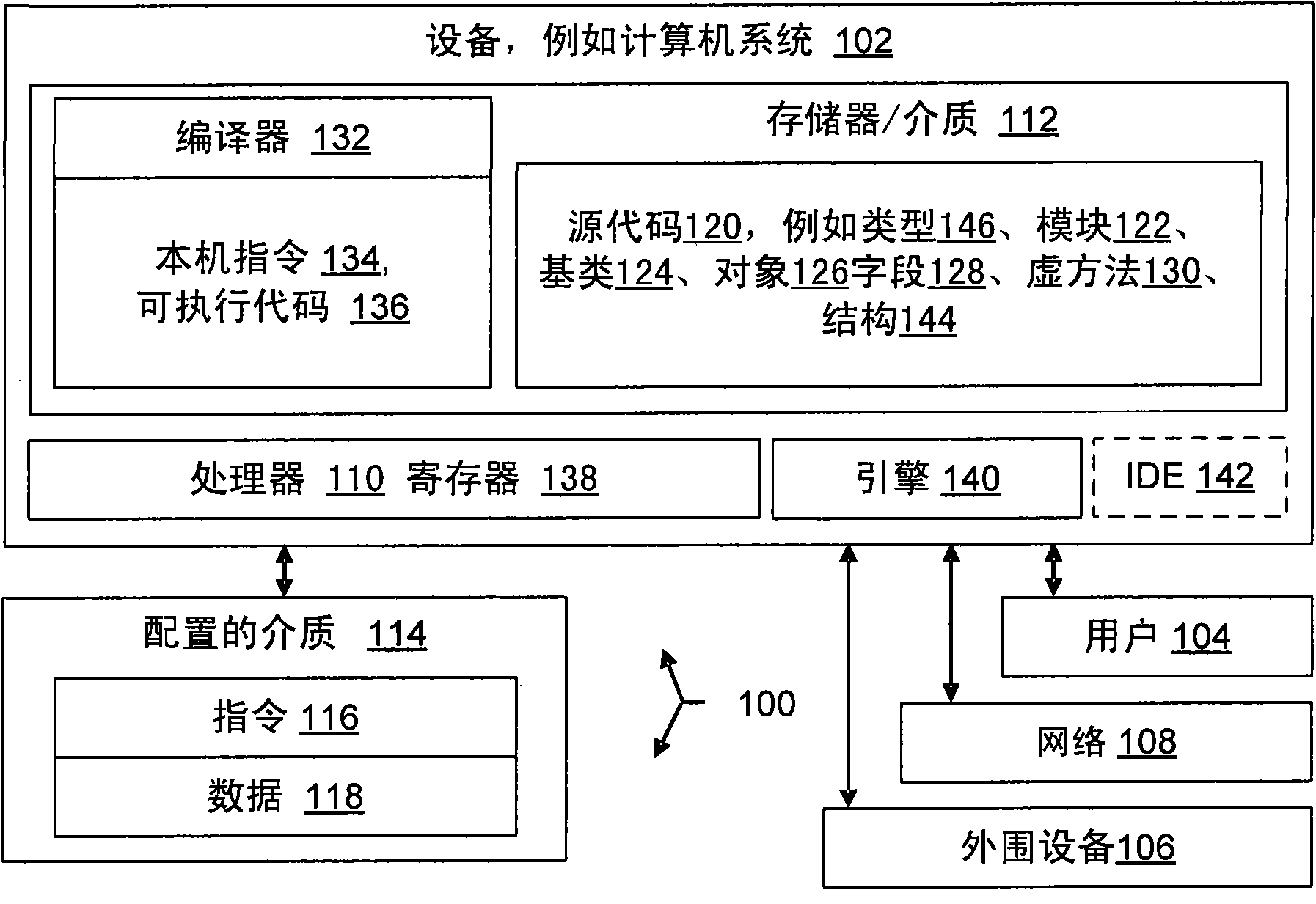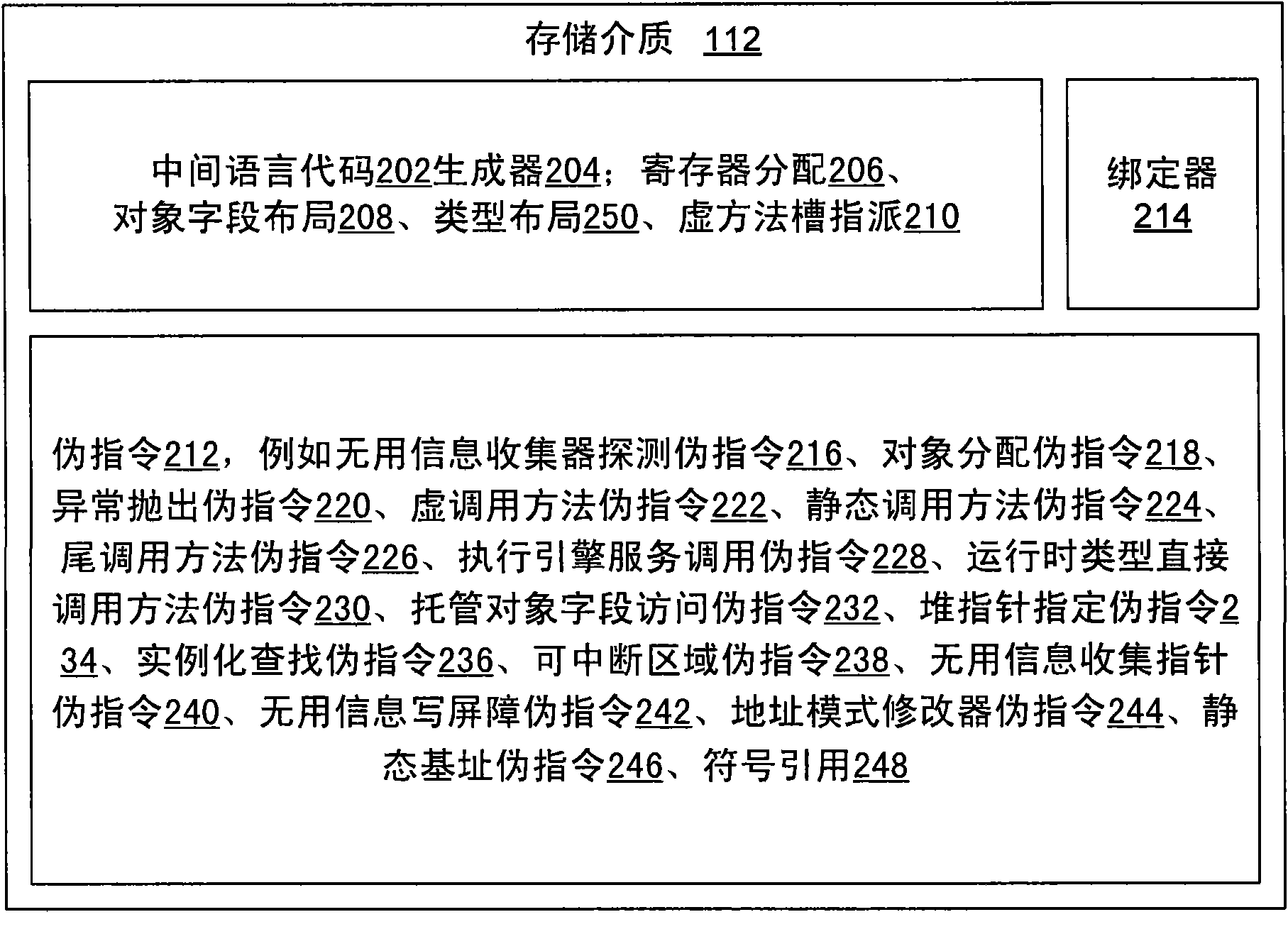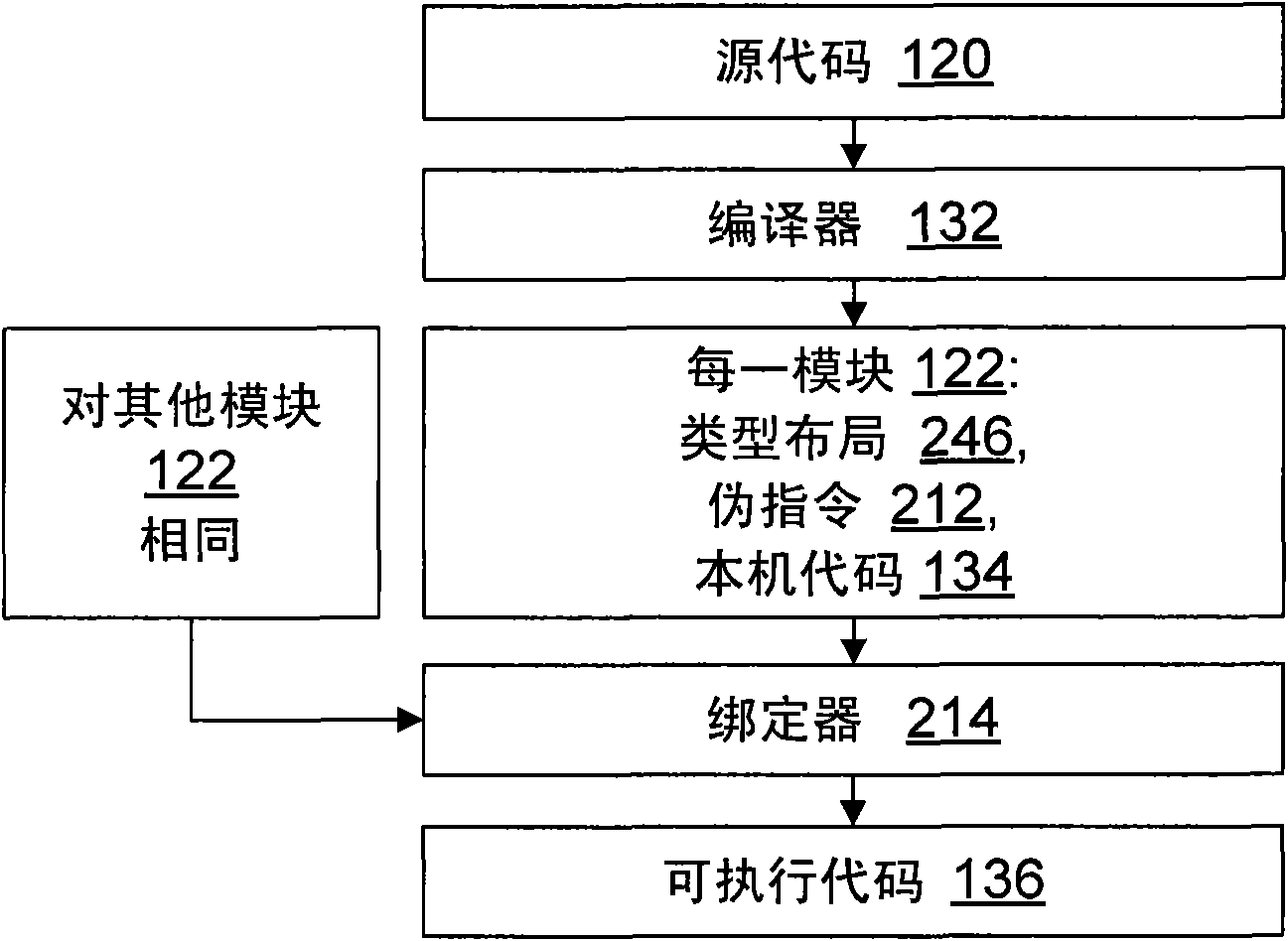Intermediate language support for change resilience
A technology of intermediate language code and useless information, applied in the field of intermediate language support, can solve the problems of vulnerability solution changes, vulnerability reduction, software reliability decline, etc.
- Summary
- Abstract
- Description
- Claims
- Application Information
AI Technical Summary
Problems solved by technology
Method used
Image
Examples
Embodiment Construction
[0012] overview
[0013] Certain software development methodologies include generating intermediate code from source code. Various intermediate codes exist, which have various characteristics. Certain technologies deploy JIT-compiled ("just-in-time" compiled) intermediate code. Typically, such intermediate code targets an abstract stack machine. In particular, mapping the abstract machine onto a tangible machine using actual hardware registers involves allocation of the machine's registers. Efficient register allocation is often a design criterion for JIT compilation, or indeed any compilation that produces machine language. However, acceptable register allocation schemes can be complex, making them relatively difficult to implement and making them a relatively large part of compilation in terms of time and other computational resources. JIT compilation can also perform machine-independent optimizations, which further complicates the translation from intermediate code to m...
PUM
 Login to View More
Login to View More Abstract
Description
Claims
Application Information
 Login to View More
Login to View More - R&D Engineer
- R&D Manager
- IP Professional
- Industry Leading Data Capabilities
- Powerful AI technology
- Patent DNA Extraction
Browse by: Latest US Patents, China's latest patents, Technical Efficacy Thesaurus, Application Domain, Technology Topic, Popular Technical Reports.
© 2024 PatSnap. All rights reserved.Legal|Privacy policy|Modern Slavery Act Transparency Statement|Sitemap|About US| Contact US: help@patsnap.com










